Peter Scott for A Dangerous Dynasty: House of Assad
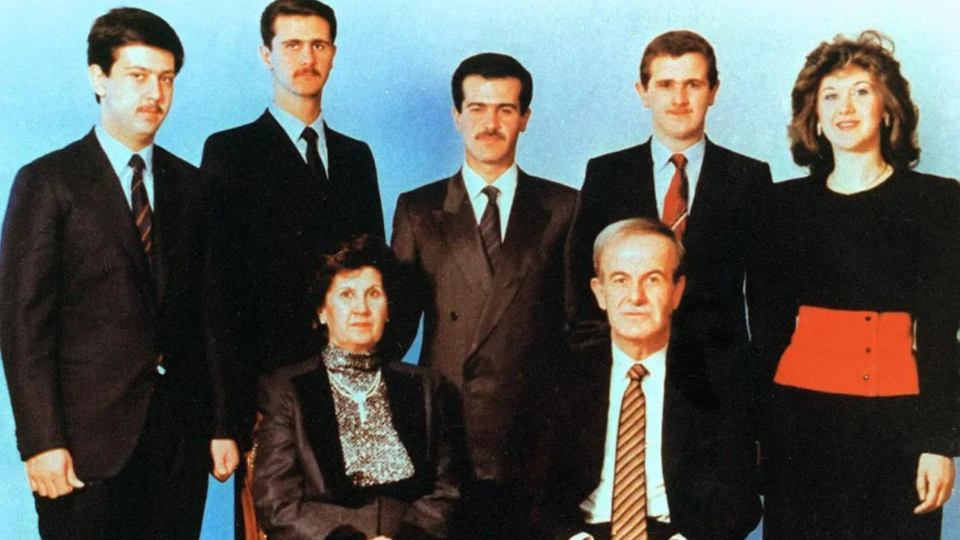
Since 2004 FOCAL International Awards competition is dedicated to the promotion and celebration of archival footage and its contribution to the creative and cultural industries. We congratulate all the past winners.

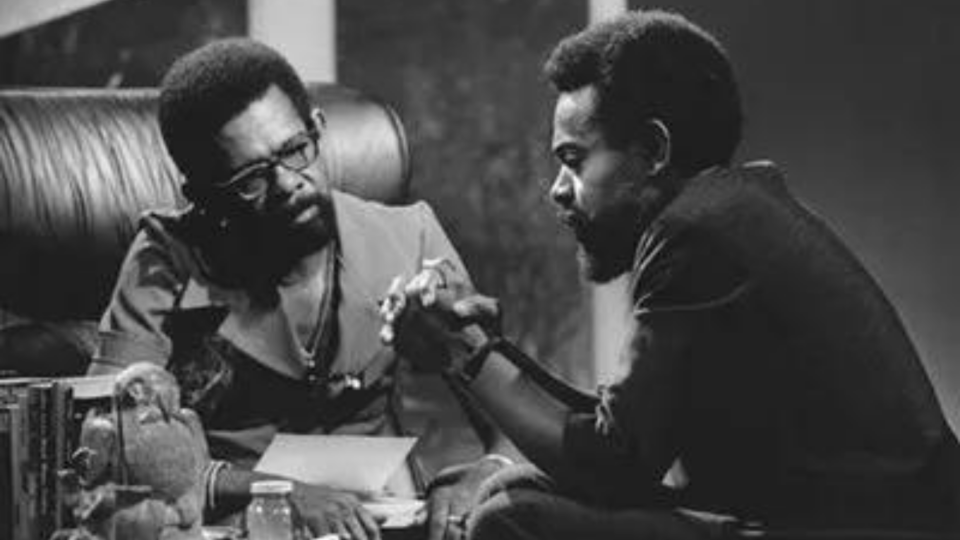
From 1968 to 1973, the public-television variety show SOUL!, guided by the enigmatic producer and host Ellis Haizlip, offered an unfiltered, uncompromising celebration of black literature, poetry, music, and politics—voices that had few other options for national exposure, and, as a result, found the program an improbable place to call home. The series was among the first to provide expanded images of African Americans on television, shifting the gaze from inner-city poverty and violence to the vibrancy of the Black Arts Movement. With participants’ recollections and a bevy of great archival clips, Mr. SOUL! captures a critical moment in culture whose impact continues to resonate.
We have chosen to submit Mr. SOUL! to the FOCAL Awards because it represents the best in usage of archival footage and stills. At its core SOUL!, also known as the first "Black Tonight Show," is a celebration of Blackness and the vibrancy and frequencies that the community has created with and without permission from the American mainstream. But it also operates as a testimony of how often we’ve used the richness of our platforms to push wider dialogue and to nuance the narrative around the Black experience. That you learn about Ellis only in glimpses seems understandable; an outsider to both his time and the contemporary time of social media activism, branding, and voice, he’s decidedly silent as a profile in the film even as he offers his presence as an ambassador. Ultimately, though, Haizlip is a host to the culture and to the generational talent and politic of Blackness, making Mr. SOUL! a moveable feast for everyone gathered at the family table. The extraordinary usage of a wide variety of layered and nuanced rare archival clips makes this project an ideal candidate for the FOCAL Awards.
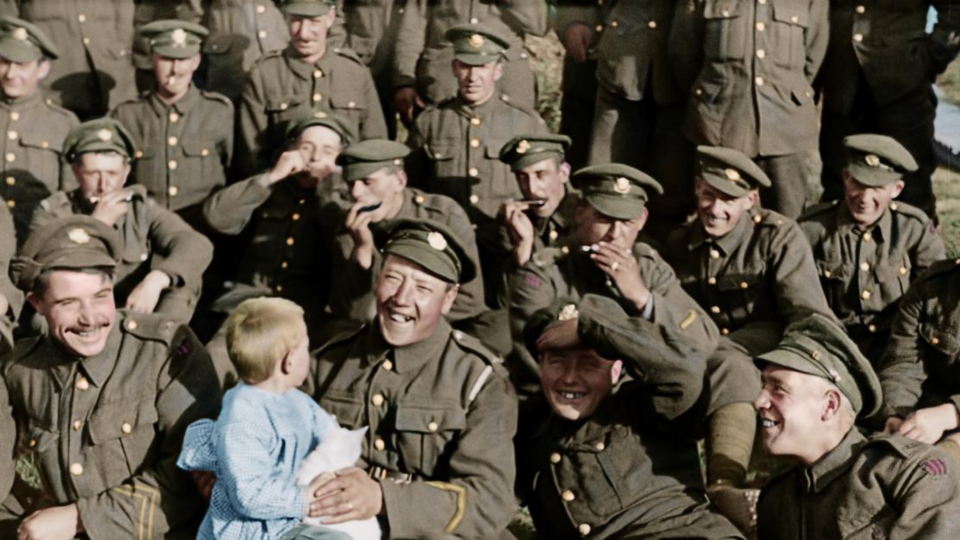
They Shall Not Grow Old is a new film by Oscar-winning director Peter Jackson which shows the First World War as never before. Commissioned by 14-18 NOW and IWM, the film brings into high definition and 3D the human faces and voices of the First World War, using state-of-the-art technology to transform original archival footage from IWM and BBC, and brings to life the people who lived through and fought in the war. They Shall Not Grow Old is Peter Jackson’s artistic response to these incredible experiences, interpreted for a 21st century audience in a ground-breaking way.
They Shall Not grow Old is a ground-breaking film that explores what can be achieved with archive footage to mark a special moment in time. It looks and sounds like no other. The film harnesses cutting-edge digital technology in a transformative and mesmerising way. It was Jackson’s perception of what life was like during the First World War, offering a more human and intimate portrait of events. The film employs over a hundred interviews with veterans, to be heard without the need for traditional historical narration. Jackson used techniques honed on his fantasy movies to sharpen the archive images and make them look crisp – dramatically cleaned-up and retimed to today’s standard of 24 frames per second to create a smoother, more life-like appearance.
The arresting colour creation process, which was informed by historical research, was both forensic and artistic - it was done carefully by hand, using the most advanced digital techniques; the contemporary sound effects and voice overs (uncovered using lip-readers), all contribute to enrich our understanding of the First World War and to provide a new perspective on archive footage. You can hear footsteps, tiles falling off a roof after a bombardment, as well as feel the shuddering impact of the shelling. The shelling was recreated by the New Zealand army using live rounds.
The narrative is very different to most documentaries, using the original voices of veterans and creating an utterly compelling story.

In 1939, 20,000 Americans rallied in New York’s Madison Square Garden to celebrate the rise of Nazism – an event largely forgotten from American history. A NIGHT AT THE GARDEN, made entirely from archival footage filmed that night, transports audiences to this chilling gathering and shines a light on the power of demagoguery and anti-Semitism in the United States.
A Night at the Garden is short documentary film made, other than musical score, entirely of archival elements. The researcher's archival and clearances expertise made the film possible. Short clips of this footage had been used in previous documentaries, but the material has never been treated in this depth.
With footage sourced from three archives and an audio recording of the complete event, we were able to create a 100% archival film - or "archival vérité, if you will. This immersive approach allowed viewers to experience the story in an uncommonly intense and immediate way, bringing out the horrific nature of the original event.

In a call to Fight For Your World, a fast paced edit and voice over hits home about how our choices have an effect on the environment.
Its a powerful ad which features a huge amount of sourced content.
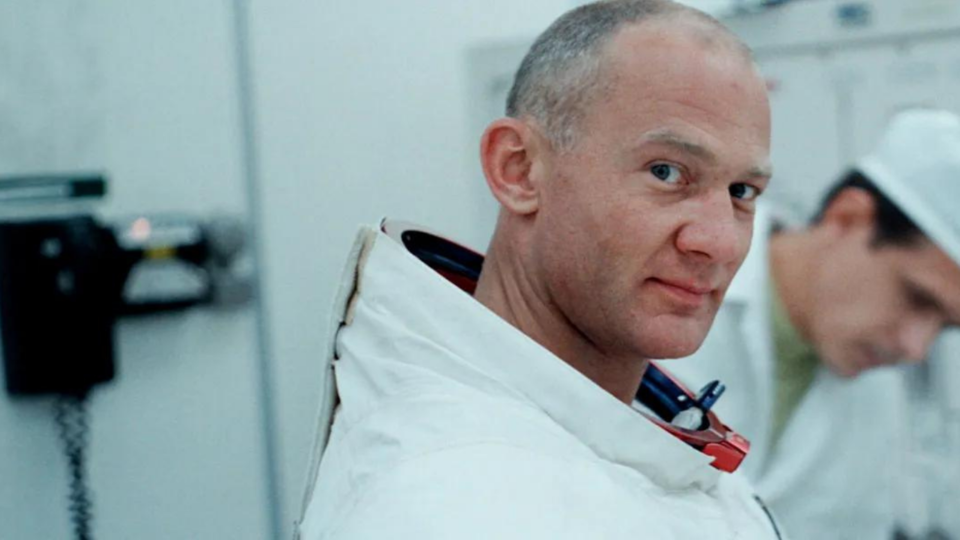
From director Todd Douglas Miller (Dinosaur 13) comes a cinematic event fifty years in the making. Crafted from a newly discovered trove of 65mm footage, and more than 11,000 hours of uncatalogued audio recordings, Apollo 11 takes us straight to the heart of NASA’s most celebrated mission—the one that first put men on the moon, and forever made Neil Armstrong and Buzz Aldrin into household names. Immersed in the perspectives of the astronauts, the team in Mission Control, and the millions of spectators on the ground, we vividly experience those momentous days and hours in 1969 when humankind took a giant leap into the future.
Director Todd Douglas Miller and the rest of APOLLO 11 film team worked closely with NASA and the National Archives (NARA) to locate all existing Apollo 11 footage when NARA staff members made a startling discovery that changed the course of the project: an unprocessed collection of 65mm large format footage, never before seen by the public, containing stunning shots of the launch, the inside of Mission Control, and recovery and post-mission activities. The footage was so pristine and the find so significant that the project evolved beyond filmmaking into one of film curation and historic preservation.
The other unexpected find was a massive cache of audio recordings—more than 11,000 hours—made by two custom recorders which captured individual tracks from 60 key mission personnel throughout every moment of the mission. Apollo 11 film team members created code to restore the audio and make it searchable, then began the multi-year process of listening to and documenting the recordings, an effort that yielded remarkable new insights into key events of the mission as well as surprising moments of humour and camaraderie.
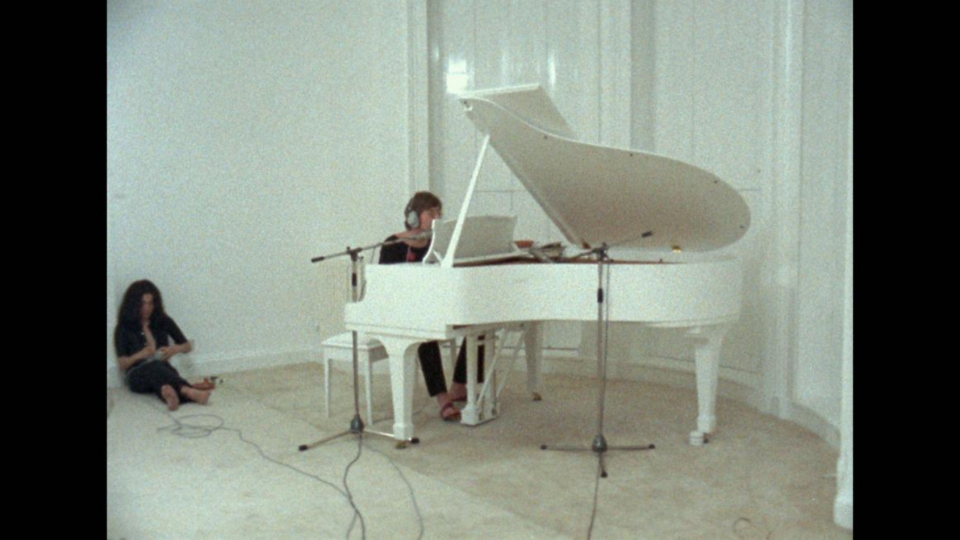
ABOVE US ONLY SKY is the untold story of John Lennon¹s album IMAGINE released in 1971. The underlying message was one of radical engagement as relevant today as ever. This film reveals the depth of the creative collaboration between John and Yoko and explores how the art, politics and music of the pair are intrinsically entwined. The album, and its iconic title track, shows the extraordinary genius behind the music that defined a movement and marked an era. ABOVE US ONLY SKY recounts a story of hope for a world still desperately in need of peace, justice, empathy and love.
Featuring interviews from Yoko Ono, Julian Lennon, David Bailey (photographer), John Dunbar (Gallerist who introduced the couple), Dan Richter (Yoko¹s neighbor and John¹s former personal assistant) and Eddie Veale (studio designer), some of whom have never spoken publicly on film before. As well as never seen before footage of Lennon and Ono from their private archive. Ultimately, ABOVE US ONLY SKY viscerally recreates the era's mood and culture, in the process confirming not only how revolutionary and essential John & Yoko¹s writings, commentaries and art were to their time‹but how inspiring, essential, and relevant their message remains today.
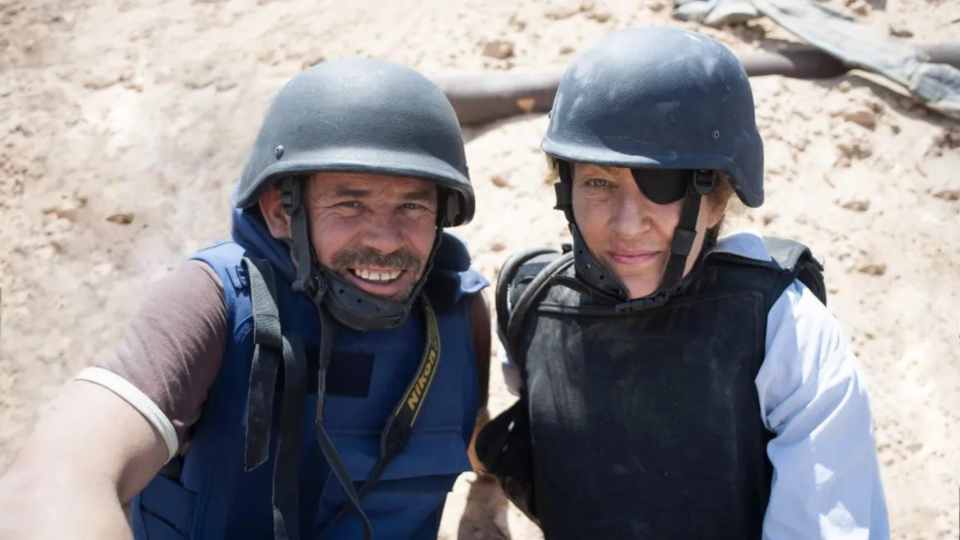
Using exclusive archive footage, stylised filming and first-hand testimony, Under The Wire tells the dramatic, highly immersive story of two journalists who entered war-ravaged Syria on 13 February 2012. One of them was celebrated Sunday Times war correspondent, Marie Colvin. The other was photographer, Paul Conroy. Their aim was to document the plight of Syrian civilians trapped in Homs, a city under siege and relentless bombardment from the Syrian army. Only one of them returned. This is their story.
The archive used in Under The Wire is very much the foundation of the film.
It was sourced over a three-year period, involving extensive searches in countries across the middle east and Europe, including some footage that was smuggled out of Syria itself. Much of it is exclusive, and has never been broadcast before.
Great attention was paid to the integrity of the footage, ensuring it came from a a strict 18 day period in Feb 2012. Nearly all of it was traced back to original sources, directly to the people who filmed it, rather than gleaned from libraries.
The archive provides a rigorous and factually accurate record of an extremely important event in the Syrian civil war (the siege of Homs), and the death of one of the world’s most famous war correspondents (Marie Colvin).
A key aim of the film was to take the viewer on the assignment into Syria with Paul Conroy and Marie Colvin, and attempt to immerse them in the relentless intensity of that journey. The archive has been crafted very much to that end, intercut with the first hand accounts of the protagonists to give a truly immersive experience. (One reviewer noted that while he expected to find out what happened to Marie Colvin in Homs, he didn’t expect to actually be taken there himself).
The filmmakers were very keen to ensure the archive was not ‘separate’ from the interviews and storytelling that drive the film. A key device, used throughout, was to play back footage – both visual and audio – to the protagonist
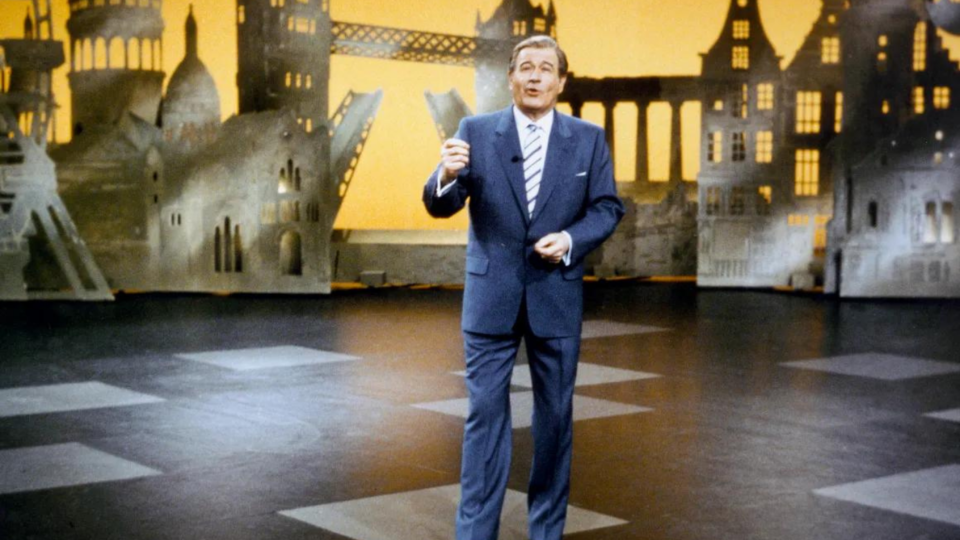
German television showmasters of the 1950s played a key role as West-German society tried to forget the Second World War. Like the director’s father, they belonged to a special generation, scarred by events and now totally dedicated to rebuilding Germany. Traumatic experiences in the war were either ignored or repressed.
Kulenkampff's shoes tells his story about post-war Germany and a family that stands for many others by using only archive material. The director develops the story by interweaving her family history (and old family films and photos) with historical events. In this way, we gradually learn how the trauma of the 1950s infected not only German families, but also public broadcasters, and how one was connected to the other. But also how the economic miracle and the beginning globalization changed family life. When the film was broadcast in August, we received more than 300 letters from other filmmakers, journalists, but also from ordinary people who shared their family history with us because they actually saw something of it in the film. We realized that we had hit a nerve. The film brings us closer to the economic miracle generation by showing us the images that that generation saw on TV.
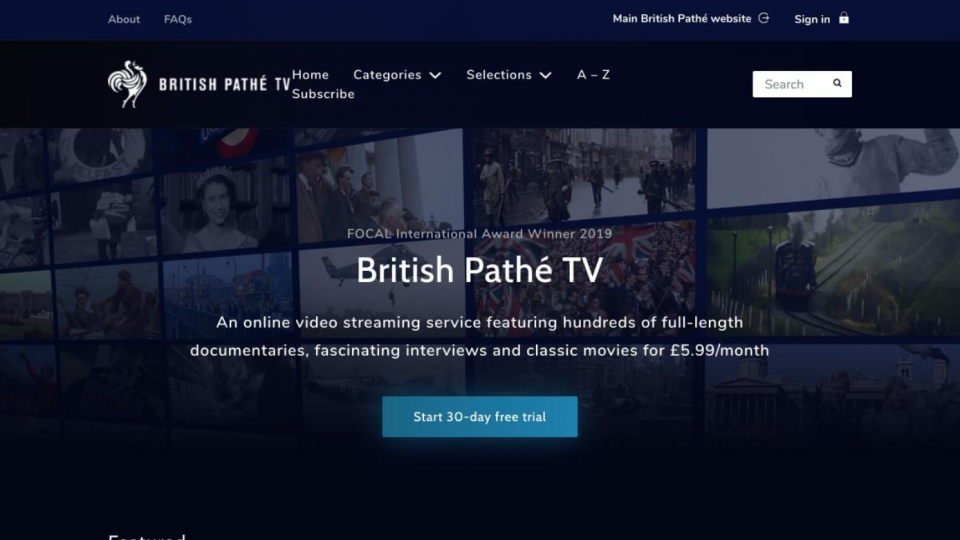
British Pathé TV (www.britishpathe.tv) is an online streaming service offering an extensive range of full-length archive-driven documentaries. It aims to appeal to specialist audiences that mainstream services are failing to cater for, such as history buffs, royal watchers, cinema aficionados and train enthusiasts.
This unique channel is owned by British Pathé Ltd, the world-renowned archive and media company. Relaunched in December 2018, the channel includes content from TV and DVD producers while also drawing on British Pathé’s own library of vintage documentaries.
It's designed to complement the existing British Pathé newsreel archive, which remains free-to-view on its separate website.
British Pathé relaunched its online streaming service British Pathé TV (www.britishpathe.tv) in mid-December of 2018. The original site acted as a proof-of-concept for a specialist SVOD channel catering to niche markets, but was reliant on partners and third-party technology.
Involving considerable development and financial investment, British Pathé took full in-house control of the channel and completely redesigned it, added more content, acquired new programmes and made it available at a lower price, enabling more people than ever to view its archive-based content (documentaries new and old, compilations of British Pathé newsreels and acquired independent productions). In tailoring this content for specialist interests, it meets the needs of viewers often overlooked by mainstream channels.
The new British Pathé TV is an innovative platform that gives a second life to documentaries originally made for DVD, preserving and promoting the work of archive producers and researchers for worldwide audiences who are moving away from the traditional broadcasters.
British Pathé TV’s aim is to conserve, disseminate and promote archive-driven programming and the work of archive professionals to hitherto-unreached audiences worldwide via the latest technology.
www.britishpathe.tv
Before forever reshaping worldwide culture in the 1990s and beyond, surfing’s most legendary crew were a group of teenagers from broken homes living crammed together in a small house in the North Shore of Oahu. From humble origins to cultural icons, MOMENTUM GENERATION is the first time this crew has agreed to tell their story together, giving the filmmakers unprecedented access to their inner circle and tens of thousands of hours of private archives that shed new light on the tradeoffs of individual gain versus collective unity, on what makes these pioneers both heroic and human.
Over 6 years in the making, research and outreach thoroughly covered 9 protagonists living across the world over 4 decades. During this time, the surf industry did not document chain-of-title nor track ownership. So, from scratch, we collected, converted, and databased tens of thousands of hours of archival, tracking ownership to original sources and master formats from around the world. Every wave in the film was fact checked by experts to confirm accuracy. We licensed from 138 rare sources, upres’d from every format since the 1970s, and compiled the most comprehensive library of American surfing from the 1980s through today.
In the summer of 1995 Bobby Robson was diagnosed with cancer and given just months to live.
Miraculously, less than a year later Robson was managing the legendary FC Barcelona - their motto ‘More Than A Club’.
But Bobby Robson was more than a manager.
Via the Hand of God, Gazza’s tears and England’s greatest World Cup abroad to titles in Europe’s top leagues and a Barcelona treble, Robson overcame the most extreme challenges before a career like no other came full circle when he returned to ‘save’ his beloved Newcastle.
This is the definitive portrait of one of sport’s most inspirational figures.
More Than A Manager tells the story of Bobby Robson’s life in a non-sequential timeline, using the 1996/97 La Liga football season when Bobby was manager of Barcelona as the central constant narrative, which is returned to after every voyage into Bobby’s historic past – a break from the traditional biopics method of delivering a narrative linearly.
Additionally, the integration of archive material with originally shot interviews and b-roll to support the narrative to create well-crafted chapters of Bobby’s life. Archive material varied in age (the oldest being over 50 years old), was from various international sources and formats - the reconditioning and matching of archive footage to originally shot rushes was successful in completing the narrative.
Further to this, the intricate construction of Bobby Robson narrating his own life through various video and radio archive sources posthumously provides an emotional connection between Bobby and the audience. The careful and meticulous editing of Bobby’s speech and it’s timing provides the most poignant ‘soundtrack’ to the film, with the other cast members supporting Bobby’s narrative rather than ever controlling it.
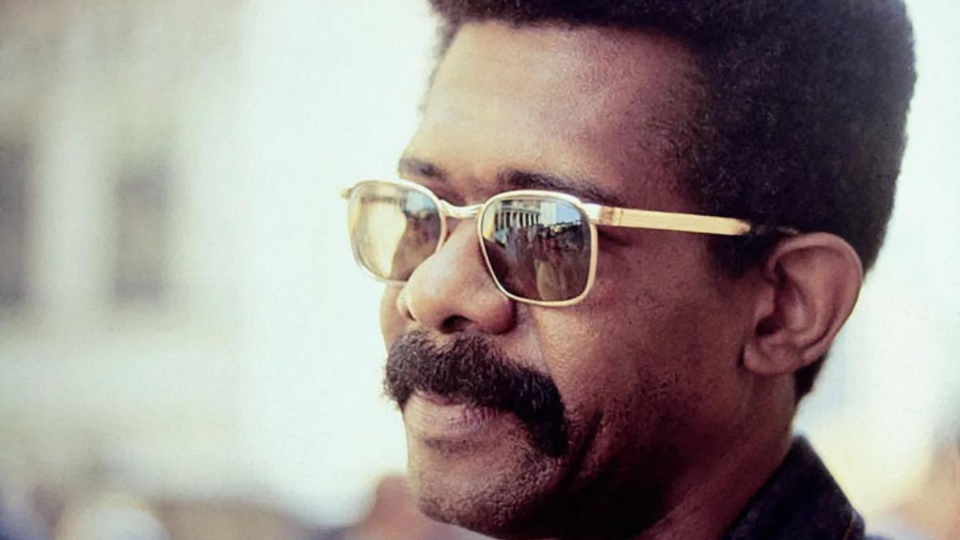
From 1968 to 1973, the public-television variety show SOUL!, guided by the enigmatic producer and host Ellis Haizlip, offered an unfiltered, uncompromising celebration of black literature, poetry, music, and politics—voices that had few other options for national exposure, and, as a result, found the program an improbable place to call home. The series was among the first to provide expanded images of African Americans on television, shifting the gaze from inner-city poverty and violence to the vibrancy of the Black Arts Movement. With participants’ recollections and a bevy of great archival clips, Mr. SOUL! captures a critical moment in culture whose impact continues to resonate.
We have chosen to submit Mr. SOUL! to the FOCAL Awards because it represents the best in usage of archival footage and stills. At its core SOUL!, also known as the first "Black Tonight Show," is a celebration of Blackness and the vibrancy and frequencies that the community has created with and without permission from the American mainstream. But it also operates as a testimony of how often we’ve used the richness of our platforms to push wider dialogue and to nuance the narrative around the Black experience. That you learn about Ellis only in glimpses seems understandable; an outsider to both his time and the contemporary time of social media activism, branding, and voice, he’s decidedly silent as a profile in the film even as he offers his presence as an ambassador. Ultimately, though, Haizlip is a host to the culture and to the generational talent and politic of Blackness, making Mr. SOUL! a moveable feast for everyone gathered at the family table. The extraordinary usage of a wide variety of layered and nuanced rare archival clips makes this project an ideal candidate for the FOCAL Awards.

Nikolai Vavilov was a botanical genius who travelled the world, accumulating a vast wealth of biodiversity. Trofim Lyssenko was a talented agronomist who claimed he was able to increase crop-yields through his pseudo inventions.In the young Soviet Union plagued by famine, they would each attempt to solve the problem which haunted the communist authorities: how to feed the people.The genius would die of hunger in a Stalinist prison, the charlatan ended up as president of the academy of sciences.Based on hitherto unreleased archives, this incredible scientific controversy takes on its full significance at a time when the whole world is wondering how on Earth it can feed the people of tomorrow.
In this archival documentary, Russian director Gulya Mirzoeva, born in Tajikistan, of Russian culture but now living in France, has collected a rich variety of archives depicting life – and rural life – in the Soviet Union of the times of the famine. Many of them are hitherto unpublished. Through these archives, she tells the story of the rivalry of two scientists who both had the ambition to transform the ailing Soviet agriculture into a flourishing and generous production. An important but little known story of one of the fathers of biodiversity – and a story with dramatic consequences.
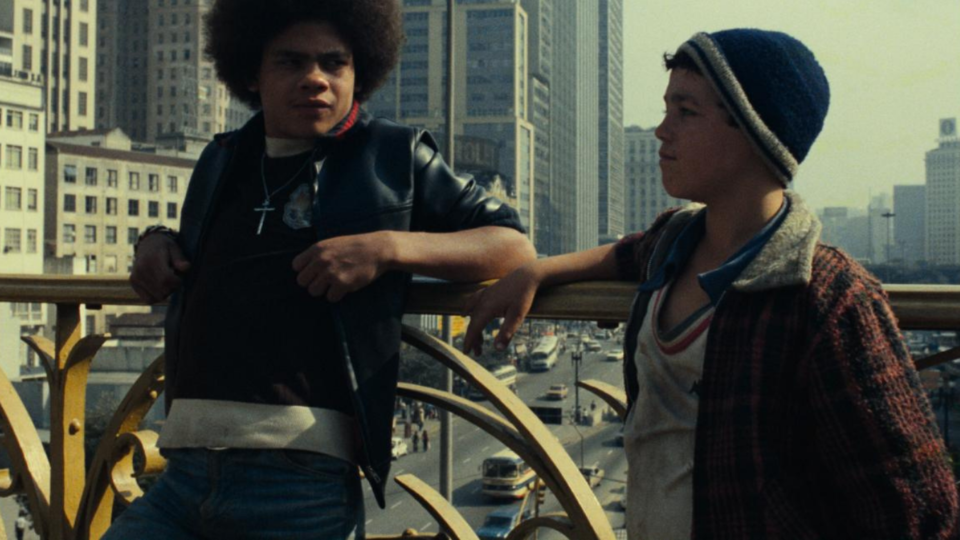
When "Pixote" was first released critics compared it to De Sica's "Shoeshine" and Buñuel's "Los Olvidados" for its unsparing yet poetic depiction of the desperate lives of a ground of abandoned Sao Paulo youths. Babenco's film was celebrated and appreciated but relatively soon became unavailable to audiences due to the poor state of the elements available to strike new prints. The significance of the film for Brasilian cinema and the urgent need of restoration made "Pixote" an ideal candidate for The Film Foundation's World Cinema Project, engaged since 2007 in restoring, preserving and disseminating films from all over the world, with particular focus to neglected areas. The project was suggested to The Film Foundation by filmmaker Walter Salles.
"Pixote" represents a successful example of several institutions and individuals across the world joining forces to save film heritage. It was suggested by Walter Salles to Martin Scorsese, funded by Scorsese non-profit The Film Foundation through the support of the George Lucas Family Foundation, involved two FIAF members, Cineteca di Bologna and the Cinemateca Brasiliera as well as a number of Babenco’s collaborators. It took almost 2 years to complete the project which was made urgent by the state of the original elements. The film's cultural and political significance, the technical complexities inherent to the restoration and its full preservation scope (reflected in the great wealth of preservation materials) suggested it might be a very good fit for the Focal Award.

We undertook the restoration of Gerry Anderson’s 1968 Supermarionation series ‘Joe 90’ following our highly successful restoration of ‘Captain Scarlet’ in 2017, which garnered rave reviews for the high standard we achieved. Buoyed by the critical and commercial success of this, we embarked on ‘Joe 90’ and have again achieved superlative results and reactions. The release strategy is a simple one – we restore 8 episodes per release and these are available direct to consumers as they are completed, volume by volume until completion, bypassing the usual market strategy. This has created both demand and a rationed viewing habit, where fans are spreading consumption of the episodes in anticipation of the next volume, recreating the original transmission experience.
Our strategy is to bring more restored archive content to market. To achieve this we built a state-of-the-art grading suite, establishing an experienced and highly-skilled and respected restoration team and incorporating both into an already established authoring studio. This unique operation allows us to restore, produce and distribute archive content initially direct to consumers via our website and then in a second window to the general market. This strategy cost-effectively frees content that would not ordinarily be considered for such treatment and introduces lost treasures to a new audience, in a form never seen before for any audience. We now have a long term programme of content planned, all of it destined to attain the consistent high standards we have set.

